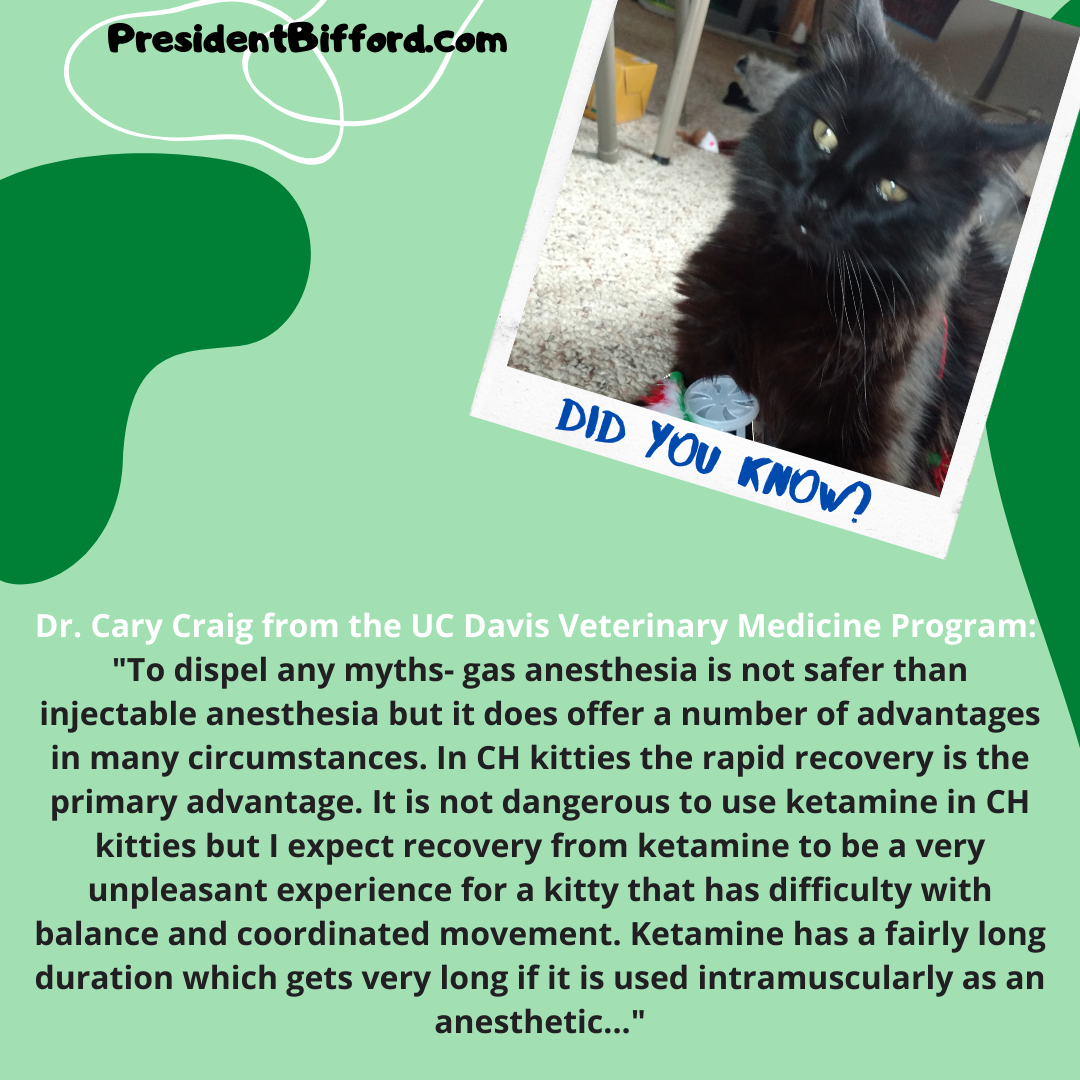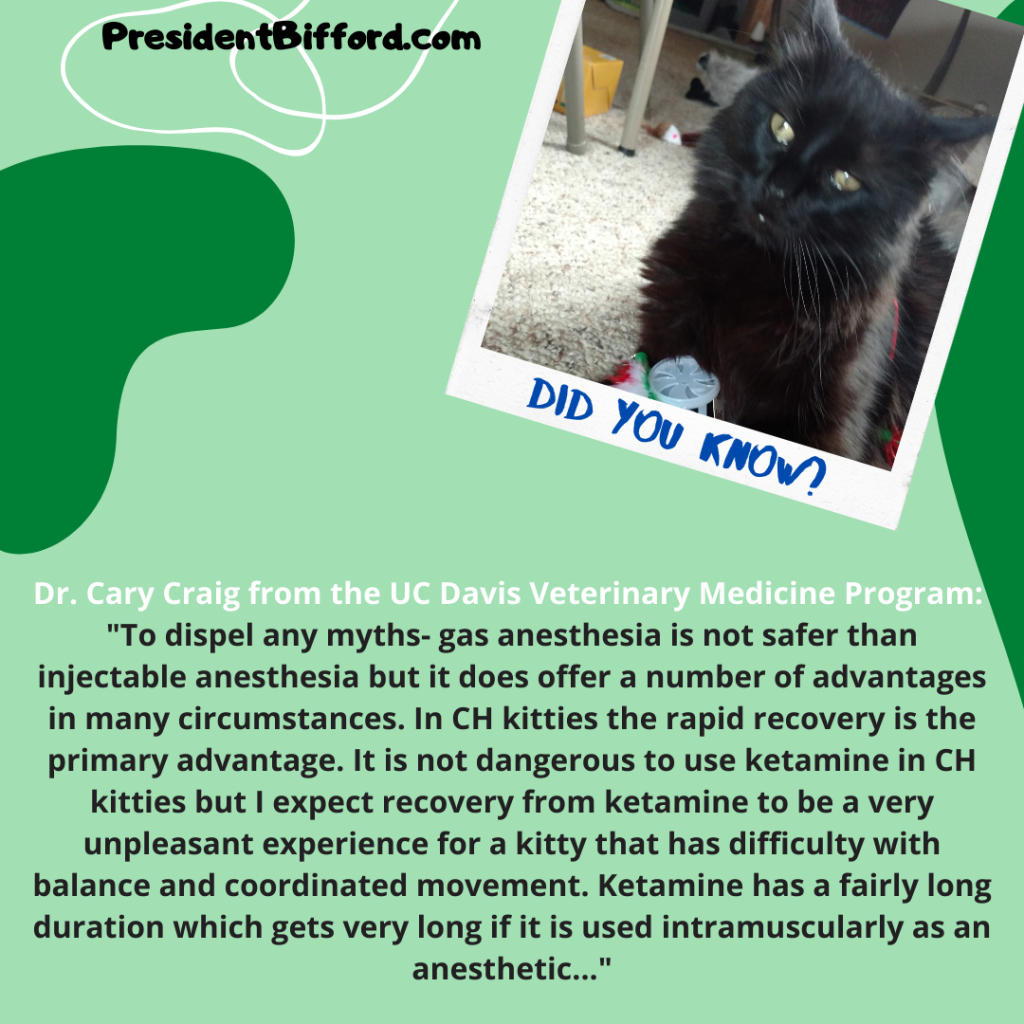Boycott Petland/Harbor Pets
I know what you are thinking. Here comes the diatribe from an angry, mourning woman who had just lost her soulmate dog and wants to rail against PetLand/Harbor Pets.
Absolutely. But hear me out! Am I thankful that I just so happened to be in that horrible store at the right moment where Maggie was unfortunately being discarded like trash? Yes! I am forever grateful that I was there at that second to pipe up and volunteer to take this little bundle of fur and wrinkles home!
Petland/Harbor Pets gave me my soulmate. The light of my life. My best friend.
But I will FOREVER educate and inform people on the dangers and poor practices they utilize and how these poor puppies are products of backyard or amish breeders and are usually sick, have health problems (and usually chronic issues) all while Petland/Harbor Pets laughs all the way to the bank.
Take Maggie for example. She was from an amish breeder that Petland purchased her for $150.00 and they were going to turn around and sell her for $3999.99. Do not fret! Petland was so giving to those who cannot afford these sweet babies a credit card with “financing”! [Insert gagging noise here!]
You think to yourself that NO one in there right mind would purchase a puppy from a petstore where they have to finance (or spend thousands of dollars for that matter) but I can tell you that in my daily work at a local veterinary clinic I see these puppies CONSTANTLY. I also see the shock on their faces when their new expensive bundles of joy do not have valid vaccination records, have health issues (such as hernias, heart murmurs, cleft palates and more) or that the petland “warranty” is basically just a glorified piece of toilet paper.

So how does Petland continue to get sales? In my honest opinion? They know how to play on the heartstrings of empathetic animal lovers that most likely have no idea what they are embarking on by purchasing one of these poor puppies. If you saw these sad, lonely puppies that live in groups with bars for walls and grates for grass wouldn’t it pluck at your heart strings?

Images shot as an undercover shopper show cages crowded with puppies at the Kennesaw, GA Petland store, 9-6-2018. The puppies spent all day in their cages and were not let out for regular exercise. 

My best advice? DO NOT BUY FROM PETLAND/HARBOR PETS! Ever. Point. Period. I know what you are thinking (or going to say) “But…But…this is where you saved Maggie from!”
You are right! This is where I rescued Maggie from but I only rescued her because I did not pay their prices thus supporting the vicious cycle. Maggie was considered trash to them, garbage, unable to profit them in anyway so of zero use to them.
Those that say they “rescued” their pets when they bought them from these stores I am sorry and I know this is an unpopular opinion but you BOUGHT an animal from them. You supported them. These stores do not care if you think you “saved them” or “rescued them” in fact they do not care what you do with these babies just as soon as your payment clears.
A former employee at Petland in Boardman summed up their thoughts on these animals with one melancholy statement, “A man came in and was looking at one of our rottie puppies. He was allowed to interact with her in one of the “rooms” where he suddenly began to hit her. I ran over and interrupted the abuse and was met with our manager who informed the man that he did not care what he did with the dog ONCE he bought it but until then the dog was Petland property and he was NOT allowed to behave that way…”
Petland did not care that this man was clearly a psychopath and hitting this dog, they did not care that the man was going to continue this cycle of abuse once he brought the dog home, Petland only cared that he purchased the dog first before “damaging” the goods.
Maggie Mae was the absolute light of my life and my saving grace in so many ways but it was no secret that I referenced to her as my adorable but very real “mutant” — she had bladder cancer, kidney stones, kidney failure (that had been years in the making), she came to me with an inguinal hernia, her dental disease was atrocious. She was every sense of the term a mutant but she was all mine. She was MY mutant and my best friend and I had an idea of what I was getting into by taking her home (and luckily I work at a veterinary clinic that helps take the “sting” out of almost bi-weekly veterinary visits, medications, diagnostics etc.,) but most families are overwhelmed once they fell in love with these tiny sweeties and take them to their vet’s only to find out they have a health condition or need a surgical procedure that choke you with dollar signs and not only that but takes a major emotional toll on you as well.
Personally I do not support breeders at all. I do not . That is strictly MY opinion but I tell families if they MUST buy from a breeder to PLEASE PLEASE PLEASE do your homework. Research the breeder, their practices, their policies, their veterinary care in DETAIL. Be almost intrusive and invasive. Ask to see where the puppies live, ask to see their mothers and their living spaces. Do not be suckered in by cute photos of puppies only to find you have been hoodwinked and out hundreds if not thousands of dollars. Ask your veterinarian if they have breeder recommendations (they may be able to help you).
The best way to defeat these horrible places is to NEVER support them. Do not purchase anything from them. Do not allow yourself to be sucked into their stores and pressured into applying for their credit card for a puppy. Do not let them tug on your heartstrings because you are only fueling the cycle again and again. These stores know what they are doing. They do not care HOW they get a sale they just want a sale.
Write to your local state government. Stage a peaceful protest at these locations. Create a petition. Report them to the Better Business. Use your voice to be the voice of these poor puppies but also for their “moms” who are left back at the backyard breeders who are living in horrible, deplorable conditions and continued to be bred and bred past the point of exhaustion. Fight the “good fight” and help shut these businesses down!
In honor of my sweet angel, Maggie Mae 09/13/2006-01/25/2021
What are the most common household toxins to pets?
Content Courtesy of AVMA;AVMA.org
As a pet owner, you want to keep your furry friend safe and healthy, but your pet’s curious nature sometimes can get him into trouble. Animals investigate the world with their mouths and they can ingest poisonous substances accidentally. The American Society for the Prevention of Cruelty to Animals (ASPCA) Animal Poison Control Center is open 24 hours a day, 365 days a year, to advise pet owners about potential pet toxicities. To help you take precautions and ensure your pet stays safe, the ASPCA has compiled a list of the most frequent offenders, many of which can be found in and around your home.
Pets and over-the-counter medications
In 2018, the ASPCA received 213,773 calls, almost 20% of which were related to ingestion of over-the-counter medications, such as ibuprofen, naproxen, cold medications, and herbal supplements. Even a medication that does not require a prescription can be extremely dangerous to your pet. Nonsteroidal anti-inflammatories such as ibuprofen and naproxen can cause acute kidney failure and should never be given to pets. Do not try to treat your pet’s medical problems without consulting an AAHA-accredited veterinarian, and never give him a medication that is not approved for veterinary use.
Human prescription medications and pets
ADHD medications, antidepressants, and heart medications were most commonly ingested by pets, although your pet can suffer significant side effects from any human medication he eats. Keep all medications, both prescription and over-the-counter, safely stored inside a medicine cabinet or cupboard or up high where your pet can’t reach them and ask your visitors to do the same.
What foods are toxic to pets?
Many foods that are safe for people can be deadly to pets. Keep the following toxic foods away from your beloved companion:
- Chocolate
- Xylitol (often found in sugar-free gum)
- Macadamia nuts
- Grapes and raisins
- Onions
- Garlic
- Alcohol
- Caffeinated drinks
- Raw yeast dough
- Raw or undercooked meat
Never leave food where your pet can reach it and keep pets out of the kitchen when children are eating to prevent them from gobbling up dropped food.
What about prescription veterinary products?
Prescription animal medications often are flavored to increase palatability, so pets may mistake them for treats and eat more than prescribed. Inquisitive pets may even eat pills that aren’t flavored, so keep all medications out of your pet’s reach. Remember, animals can chew through plastic bottles, so child-proof may not mean pet-proof.
What other household items are dangerous to my pet?
Products such as paint, glue, and cleaning chemicals often are left out on the assumption that pets won’t eat these bad-tasting substances. But sometimes pets lap up liquids because they feel good or have an interesting texture. Household products can contain dangerous chemicals and some household glues expand in the stomach, causing a life-threatening blockage.
Rodenticides
Products designed to kill rodents are particularly dangerous to pets, who may be tempted to eat the tasty bricks, granules, or pellets left out for mice and rats. Rodenticides kill rodents by causing internal bleeding, high calcium levels, brain swelling, or toxic gas production. Never put rat bait out where your pet can find it and keep your pet confined to your yard to prevent him from eating your neighbors’ rodenticides.
Insecticides and pets
Ant baits, bug sprays, and foggers can be poisonous to your pet. Read labels to ensure proper use of these products and prevent pets from exposure during and after use. Store all insecticides on high shelves out of a pet’s reach.
Plants toxic to pets
Plants found in flower beds, vegetable gardens, and indoor planters and arrangements can be toxic to pets. Cats, who particularly like to munch on greenery, are sensitive to many plant types, but dogs also can be at risk. A complete list of toxic and nontoxic plants can be found on ASPCA’s website, but the most common toxic plants include:
- Autumn crocus
- Azalea
- Cyclamen
- Daffodils
- Dieffenbachia
- Hyacinth
- Kalanchoe
- Lily of the valley
- Lilies
- Oleander
- Sago palm
- Tulips
If your pet eats leaves, flowers, or stems, immediately take him and a plant sample to your AAHA-accredited veterinarian. Although toxicity signs may not be apparent, it is vital to remove poisonous material as soon as possible to prevent toxin absorption into the body.
Garden products and pets
Many products used on lawns, gardens, and flower beds can cause toxicity in pets. Fertilizers made from bone or blood meal are tempting to pets and can cause pancreatitis, or can clump in the intestines or stomach, causing a blockage. Other fertilizers and herbicides applied to lawns also may contain toxic chemicals.
Cats with Special-Abilities!

Blind Cats:
Loss of eyesight can be very gradual (or you adopted a blind kitty) and oftentimes owner’s do not realize how bad a cat’s eyesight has become until it is identified by your veterinarian. Blind kitties can adapt extremely well to the loss of eyesight and often compensate by using their other senses more.
What can cause blindness?
- Dry eye, as a consequence of feline herpesvirus or an eye injury
- High blood pressure results in the detachment of the retina, the light sensitive-tissue that lines the inner surface of the eye — often cause by an overactive thyroid gland or kidney disease. Blindness in this case is often very sudden in onset, though if they are taken to the veterinarian immediately, it can sometimes be reversed.
- Injury
- Glaucoma or increased pressure of the eye – as a consequence of an injury, tumor or inherited disease.
How can I help my blind kitty adapt?
If blindness is caused by disease or injury, one or both eyes may be removed. A cat that becomes suddenly blind can become easily disoriented. They may be unwilling to leave their sleeping area and may develop inappropriate bathroom habits because they are unable to find their litter box.
- Never, ever let blind cats roam outside, for their own safety! Keep your cat indoors unless they can have access to a safely-fenced garden or run. Make sure your kitties are microchipped and consider carefully fitting a quick-release harness/collar with your name/address on it and “special ability” in the event they escape!
- Be more aware to your cat’s indoor environment to keep things fun for them! Interactive toys and puzzle feeders can better help create interest for your blind cat.
Finding Their Bearings
Try to encourage your cat to walk around on their own, as carrying them may cause them to become disoriented! Cats have scent glands on their paws that allow them to leave behind a scent trail to follow — this is even more important for blind cats! If you do have to carry them, always put them down on a surface they are familiar with such as their feeding/sleeping area (this allows them to easily get their bearings about them). Beware of lifting a blind cat onto a raised surface as there is a chance they will fall and get injured. Using various textured surfaces in different areas can also help your blind cat get around.
Approaching Your Cat
Talk to your blind cat as you approach them to avoid scaring them. If your kitty is blind in one eye, try to approach them (while talking to them) from the side they have vision in.
Getting Around
As blind kitties rely on scent and memory to help navigate their way around, you should avoid moving furniture, food or litter box around. Don’t leave obstacles in unexpected places where your cat can walk into them and possibly get injured. If you have stairs, place a baby gate or barrier across them until your kitty knows where they are and learns to use them properly. Putting a different texture on the top and bottom steps can help your kitty quickly learn when to anticipate when they have reached the top or bottom stair. Whiskers become more important to blind cats to judge the cat’s distance to an object.
Play/Exercise
Sound is obviously very imperative to a blind at so they may enjoy playing with the “noisy” toys. It is important to encourage them to exercise as it is part of a cat’s natural behavior and will help them from becoming obese.
Moving House
Moving house with a blind kitty is similar to settling a sighted cat into a new home. However, blind kitties will need a little extra attention and should ensure that the new surroundings are safe. Supervise their adventures around the house until they seem confident. If they become disoriented, gently guide them back to a familiar place by using your voice or by walking with them.
Deaf Cats
Some kitties are born deaf, but many cats lose their hearing gradually as they age. Sudden loss of hearing is normally the result of illness/injury and may be temporary or permanent. Deaf kitties can compensate for their lack of hearing by using their other senses, so much so that it may be hard to tell whether or not they are deaf. There are varying degrees of deafness and various causes, which may or may not be treatable.
Types of Deafness
There are two primary types of deafness:
- Where the sound cannot pass into the ear due to;
- Tumors
- Outer & middle ear infections
- Wax build up
- Ear mites
The types of deafness detailed above may be reversible by treating the underlying causes with the guidance of your veterinarian.
2. Where the nerves associated with the ear do not function properly due to;
- Genetic problems (in the case of some white cats)
- Inner ear infections
- Drug toxicity
- Noise Trauma
- Age-Related Degeneration
These conditions generally produce permanent deafness.
How can I tell if my cat is deaf?
Some deaf kitties call out more often & more loudly – they cannot regulate their own volume – while others may become mute. It can be very hard to determined if a cat is deaf, espeically if they have been deaf from birth and is very used to their special ability, but other various signs may include:
- Failure to response when spoken to/called
- Easily startled
- Signs of dizziness/disorientation
- No longer being afraid of the loud noises (trash bags, sweepers etc.,)
- Shaking the head or clawing at the ear(s)
- Pus or other discharge coming rom the ear or an unpleasant odor from the ears.
How do I help my deaf kitty adapt?
A deaf kitty is easily startled because they won’t be aware that you are approaching. Make sure that you walk heavily when approaching them, so they can feel the vibrations. At close range, sharp hand claps or stamping on the floor may still be sufficient to gain a partially-deaf cat’s attention.
A deaf cat will not be able to hear danger signals such as cars or other animals so we strongly suggest keeping your cats indoors.
Deaf cats can learn to recognize hand signals or the flashing of a light. Make sure the signal you choose to call your cat is distinct and consistent so they do not get confused.
Three-Legged Cats
Some kitties are born with only three limbs, but the majority of three-legged kitties have suffered injury/disease, which has leg to amputation of the affected limb. Cats adjust to three-legged lifestyle remarkably well, although the initial adaptation process can be a little challenging. However, once adjusted, most three-legged cats are able to jump, climb, play, hunt albeit perhaps a little more slowly than in their four-legged days. Young cats and males are more prone to become three-legged — amputation is often result of traumatic injury, with males more likely to roam further than females and younger exploring cats more likely to be involved in road accidents. Most three-legged cats have lost a hind limb, rather than a fore limb.
My cat has had its leg amputated, how can I help them adjust?
- Confine your kitty to a room (for at least a week or so) or take advice from your veterinarian and follow any aftercare advice they may provide. Be sure to speak to your vet about the subtle signs of pain of pain in cats, as this may need managing in the post-operative period.
- Ensure there is easy access to food, water, litter box and a scratching post. Although cats don’t like to eat near their drinking/toileting area, immediately following surgery, your kitty is likely to appreciate these facilities being nearby.
- Other pets in the household may see a change. Cats rely on scent to identify the members of their social group and a stay at the vets can mean cats are not recognized when they return. It is prudent to reintroduce cats to one another slowly and only once the patient has had ample time to recover.
- Your cay may take some time to relearn how to balance with three limbs. Limit access to high surfaces and keep them indoors until they are more confident. Provide stools that can be used as steps to help your cat access things like the sofa.
- Move furniture closer together so it is not so hard to negotiate. As your kitty gets more confident and ability increases, furniture can gradually be moved back to its normal location.
- Be aware of litter box issues. Bathroom time is a vulnerable activity for a cat and if they do not feel safe using their litter box, they may choose to use the bathroom somewhere else within the house. You may need to provide a step to improve access to the litter box and be patient while they learn to cover, dig, and clean themselves with three legs instead of four.
- Your cat may appreciate help in grooming areas they have problems reaching due to difficulty balancing. If your cat is not used to being groomed, start very slowly and be sure to make the experience positive by offering praise/rewards
Do three-legged cats think their leg is still there?
Some cats will feel that they can still use their missing limb – for example, many cats missing a hind leg, will continue to try and scratch their ear with the missing limb, for the rest of their lives. It is not absolutely known whether cats are affected by phantom limb sensation which affects a high portion of human amputees, but they only rarely show signs suggestive of this.
Cerebellar Hypoplasia
Cerebellar Hypoplasia is a condition which occurs in kittens as a result of interrupted development of the brain leading to uncoordinated movement or ataxia. Affected kittens are often referred to as “wobbly kittens.” There can be many causes of ataxia, but this guide specifically addresses one of those causes – – cerebellar hypoplasia.
What causes cerebellar hypoplasia?
This occurs in kittens as a result of their mother being infected with a virus called feline parvovirus during pregnancy. It can also occasionally occur if the kitten is infected in the first few weeks after birth. Some or all of the litter of kittens may be affected and some individuals may be more affected than others. The virus affects the cerebellum during the kitten’s development and it is this part of the brain that is responsible for fine-tuning movements/mobility.
What are signs of cerebellar hypoplasia?
Wobbliness becomes evident when kittens first start to move at a few weeks of age but is non-progressive so does not worsen oer time. Cats are affects for the rest of their lives, and generally learn to cope with their condition. Affected cats may:
- Stand with their legs far apart
- Sway when they move
- Life their legs high when they walk or goose step
- Show nodding/head tremors, which may worsen when they focus to do something such as eating
- Lose their balance
Is there any treatment for cerebellar hypoplasia?
Once the cerebellum has been damaged in this manner, it cannot be repaired, so there is no treatment for cerebellar hypoplasia.
Does a cat with cerebellar hypoplasia require special care?
- Cats with CH appreciate a deep litter box with high sides that they can use for support to balance when going to the bathroom, but ensure the cat can get in and out of it without issue. A large box gives the cat plenty of space to move around inside it, and ensure it cannot be tipped.
- Affected kitties may be messy eaters- feed in an easily cleaned area and use a sturdy water dish that is not easily tipped over – for some kitties, raising bowls a little can be helpful
- Kitties with CH can find it difficult to accurately jump – provide easy ways to cats to access their favorite areas – cushions and rugs can act as “crash mats”
- Use a ramp to give an affected cat access to high surfaces (but be careful as they may tumble when trying to get down)
- Carpeting can provide extra grip for kitties walking around or climbing
- Keep their claws trimmed as it can be more difficult for them to “unhook” themselves if they get a claw stuck.
What is outlook for kittens with CH?
Most kittens are only affected mildly to moderately. With minor adjustments to their care they can enjoy a good quality of life. Occasionally, very severe kittens may be unable to perform without guidance, compassion, patience and constant care.
Meow As Fluff

A HUGE thanks to Caitlin McAuliffe at Meow as Fluff for this beautiful write up and video for Bifford’s cause! You can visit them (also be sure to “like” them on Instagram and Facebook, too!) At http://meow.af/ or more Bifford specifically at: http://www.meow.af/bifford
Meet The Handsome Wobbly Cat Who Was Adopted And Returned Three Times Before Finding The Perfect Forever Home!
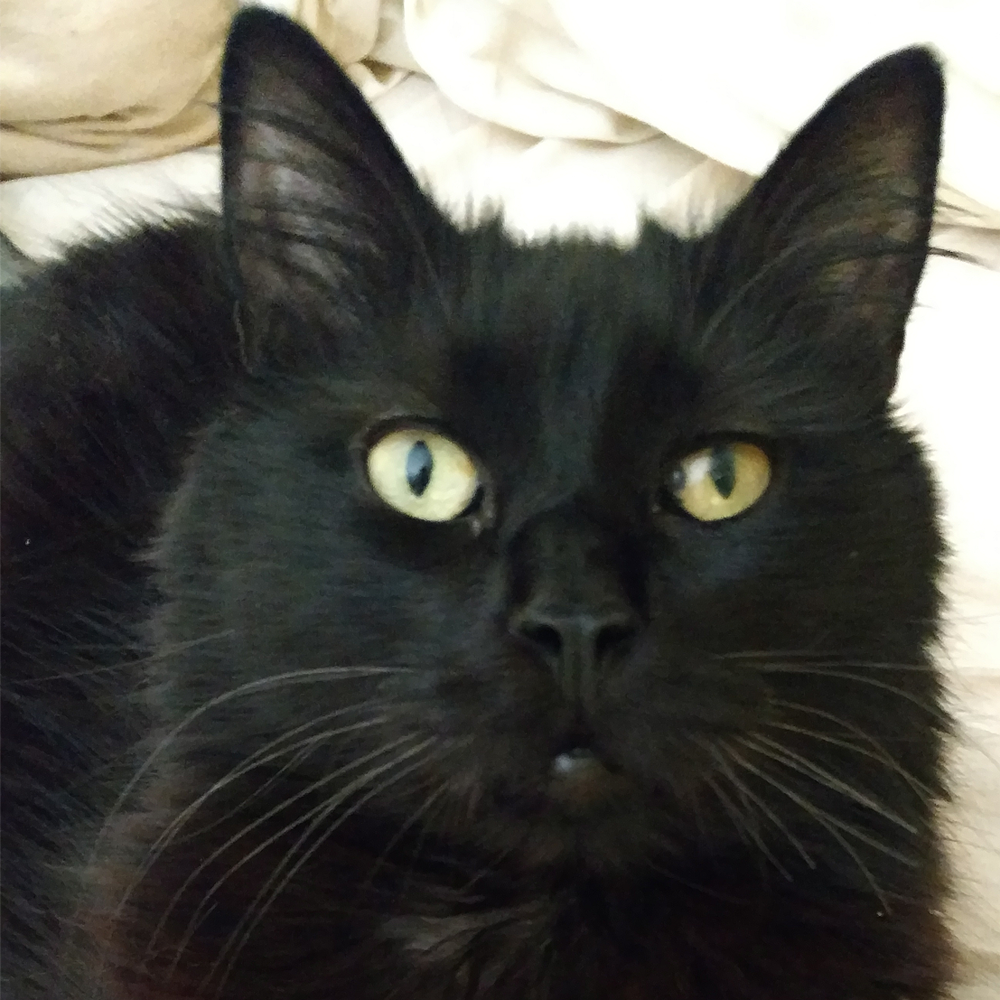
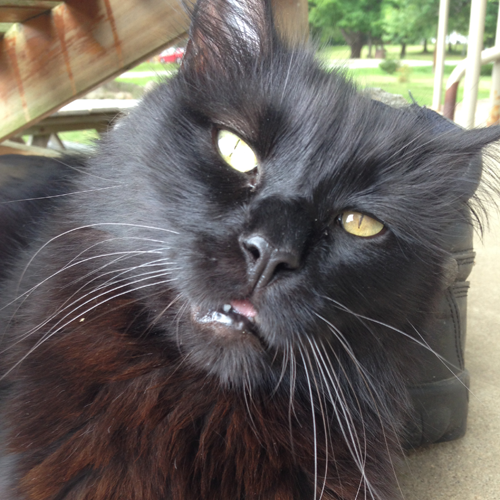
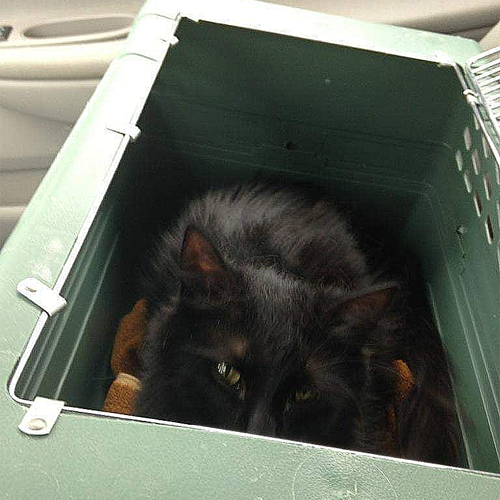
When Suzi Langer was asked to foster Bifford, a cat with cerebellar hypoplasia (CH), for the animal shelter near her home in Youngstown, Ohio, she didn’t have any experience caring for animals with special needs. However, when Suzi learned the fluffy black feline wasn’t thriving at the shelter, she reluctantly agreed to foster him.
“He was getting bullied and beat up on by the other cats, and he was depressed, lethargic, and not really eating,” remembers Suzi, so she picked him from the shelter in early 2014. “I opened the top of the worn green carrier to see two warm golden eyes staring back at me. Bifford sat there, quietly in the ‘turkey stance,’ and he seemed to almost be overwhelmed by his changing situation.”
However, when Suzi learned Bifford’s history, she quickly understood why he appeared uneasy. On October 9, 2011, Bifford and his litter mates were born with cerebellar hypoplasia, a non-progressive neurological condition that affects balance and coordination. “This may occur if a pregnant queen is vaccinated for feline distemper (FVRCP) using a ‘modified live virus’ vaccine,” explains Suzi, “or if the mother suffers trauma, malnutrition, or panleukopenia [a highly contagious viral disease].”
Sadly, when Bifford was just nine days old, he was rejected by his biological mother, so he was bottle fed by a good Samaritan. Due to his lack of coordination, the good Samaritan also assisted the wobbly kitten by helping him use the litter box and cleaning him, but she eventually surrendered Bifford to the shelter because she was unable to provide him with the extra care and attention she believed he required. “She claimed that he needed 24 hour around-the-clock care in order to survive,” says Suzi.The note that was attached to Bifford’s carrier when he was surrendered
While Bifford was eventually adopted, he was returned to the shelter by his first family because they were going on vacation. His second family was unhappy because although he was able to use the litter box on his own, he didn’t cover up the mess, so they also returned Bifford to the shelter. He was adopted by yet another family and was returned to the shelter for a third time, but not before he was subjected to profound cruelty.
“The ‘owners’ had attempted to lock Bifford in an empty hot tub because they wanted him to ‘die with dignity’ and ‘contain the mess,’ ” explains Suzi. “It breaks my heart to think about Bifford patiently waiting for his ‘family’ to return and with each passing minute he slowly loses hope that they were coming back for him.”
Fortunately, within moments of bringing Bifford home on May 9, 2014, Suzi fell in love with the adorable special needs cat, and she and her husband decided to adopt him! “Bifford was a clumsy, affectionate, verbal little dude and had no reservations with enjoying the ‘clingy’ life attached to his mama’s hip!” says Suzi. Plus, Suzi knew being an adult black cat with special needs would make it harder for Bifford to find a forever home, and she was confident she and her husband would be able to provide him with the care, time, and attention he needed to thrive.
Initially, it was difficult for Suzi to resist the urge to coddle Bifford, especially because cats with cerebellar hypoplasia have issues with balance and coordination that frequently cause them to stumble and fall. However, as it became apparent Bifford was unlikely to actually injure himself, Suzi eventually realized she didn’t need to be quite so protective. “Just like toddlers, sometimes it is OK to let them stumble and fall,” says Suzi. “Of course, be there for them always, but it is OK to give positive reinforcement that it is OK to stumble and sometimes fall just as long as they always get back up and keep on truckin’!”
Nearly seven years later, Bifford is doing better than ever, and while he still wobbles when he walks, he’s incredibly happy and active. He’s also surprisingly self-reliant, which Suzi believes is a product of the more laid-back approach she’s taken towards Bifford’s cerebellar hypoplasia. “Today Bifford is more independent, able to climb into bed at night with us, and overall be a more self-reliant little dude,” explains Suzi, “and I believe that’s partly due to the fact that I am not a ‘helicopter’ mother and constantly swarming over him.”
However, this doesn’t mean Suzi and Bifford don’t have an extremely close relationship. In fact, there’s nothing this affectionate boy enjoys more than cuddling with his mom and dad, but he also adores spending supervised time outside during the spring and summer. “He never goes outside unattended and always wears a brightly colored harness with a leash on it,” says Suzi. “He loves to try and catch lightning bugs, ‘catching’ flowers blowing in the breeze, and all around running and gallivanting in our large open field next to our home.”
Even though it’s very obvious Bifford has an excellent quality of life, Suzi has encountered people, including a vet tech at a local clinic, who mistakenly believe cats with cerebellar hypoplasia are suffering and should be euthanized. She’s also found other common misconceptions are that cerebellar hypoplasia is contagious and that it gets worse over time, neither of which is true.
“These amazing babies are just as capable of living a long, happy, healthy life with minimal ‘special requirements,’ ” says Suzi. “Cerebellar hypoplasia animals — and many other specially-abled animals — are affectionate, strong-willed, resilient, amazing beings and we as humans can gain a thing or two by adopting these special babies and watching them go!”
After all, Suzi speaks from experience, because since adopting Bifford in 2014, she and her husband Michael have opened their home to a variety of special needs pets, including Bart, a one-eyed, partially blind cat; Roscoe, a Rat Terrier with epilepsy; and Maggie Mae, a deaf Pug who recently passed away from transitional cell carcinoma. “They are well-loved and well-cared for and do not require any extra care at home — just a little patience and understanding!” says Suzi.
